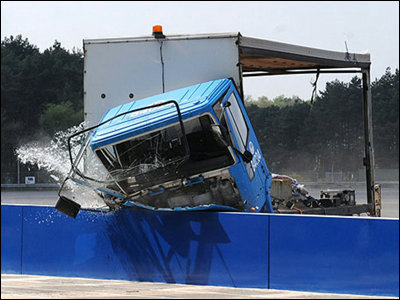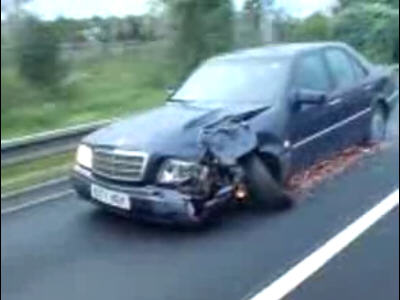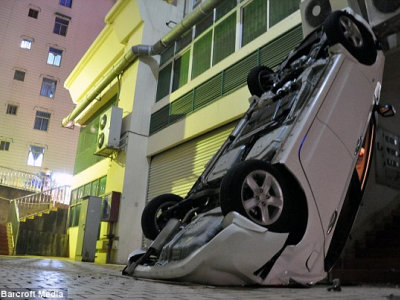A shocking video of an electric car easily breaking through a guardrail because it is too heavy is released

Electric vehicles (EVs), which are attracting attention as being more environmentally friendly than gasoline vehicles, tend
Nebraska experts weigh highway safety and electric vehicles | Nebraska Today | University of Nebraska–Lincoln
https://news.unl.edu/newsrooms/today/article/nebraska-experts-weigh-highway-safety-and-electric-vehicles/
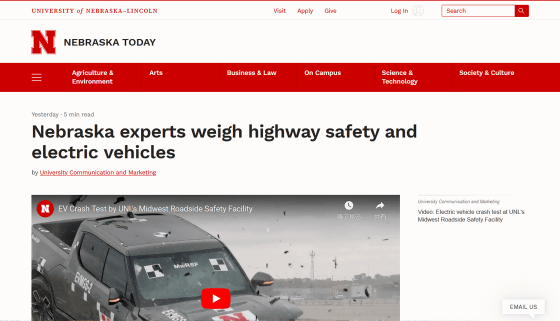
Crash tests indicate nation's guardrail system can't handle heavy electric vehicles | AP News
https://apnews.com/article/electric-vehicles-crash-test-guardrails-nebraska-3ec299a7ad87d0f63a6dd9357f663fce
Watch a 7,000-LB Rivian R1T Destroy a Guardrail in Eyebrow-Raising Test
https://www.thedrive.com/news/rivian-r1t-destroys-guardrail-ev-safety-crash-test-video
Guardrails are installed to prevent vehicles from running onto the sidewalk or roadside, so even if a car collides with them, they will not be easily broken through. However, because EV cars tend to be heavier than gasoline cars due to their batteries and have a lower center of gravity, existing guardrails may not be sufficient to prevent EVs from running out of control. thing.
Therefore, a research team from the University of Nebraska-Lincoln and others conducted an experiment in which an electric pickup truck, Rivian R1T , released by electric vehicle manufacturer Rivian in 2022, collided with a guardrail. You can see the experiment in the video below.
EV Crash Test by UNL's Midwest Roadside Safety Facility - YouTube
R1T will run from the back of the screen towards the guardrail in front. The R1T weighs over 7100 pounds (about 3.2 tons) and has a running speed of 60 miles per hour (about 96 km). The guardrail, on the other hand, is made of corrugated steel, has a top height of 31 inches (about 78 cm), and is fixed to a steel column 6 inches (about 15 cm) underground.

R1T approaches just before the guardrail.

At the moment of the collision, the bonnet was crushed, but the vehicle's momentum continued and it crashed through the guardrail.

The vehicle crashed into the concrete wall behind the guardrail without slowing down.

It jumped over the first wall and finally stopped when it hit the second wall.

When you look at the first video, it looks like the R1T crashed into the guardrail perpendicularly, but when you check the video taken with another camera, you can see that it actually collided from an oblique angle.
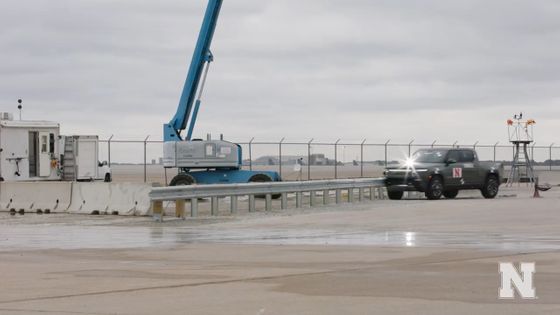
The R1T hit the guardrail at an oblique angle, and even after crashing through the guardrail, it continued to drive forward without changing course or slowing down. If such an accident were to occur on a public road where there are pedestrians, a catastrophe would be inevitable.
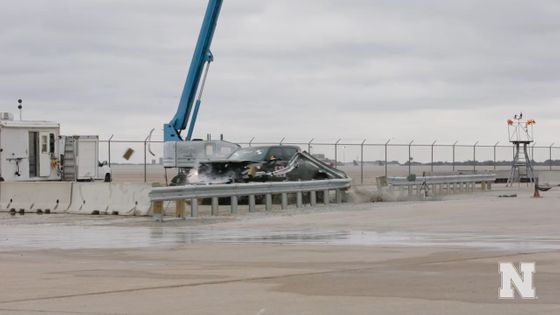
'We knew the testing of our on-road safety system would be very demanding,' said
The research team points out that in this experiment, there was no significant damage to the inside of R1V, and the possibility of serious injury to the occupants is low. However, guardrails not only protect people on sidewalks and road shoulders, but also serve to prevent vehicles from driving into dangerous areas off the road. For example, if the outside of the guardrail is a cliff, a steep rocky surface, or the road is on a bridge that crosses the sea or lake, there is a risk of death for the occupants even if the inside of the EV car is safe. is.
Michael Brooks, executive director of the Center for Auto Safety, a nonprofit organization that aims to protect consumers in the auto industry, said, ``Guardrails are the last safety device. I think the weight of the vehicle is a real concern. Large EV vehicles in the 7,000 pound (approximately 3.1 ton) class are appearing one after another, and this is a concern.'
Of course, EVs are not the only vehicles that weigh over 5,000 pounds; full-size pickup trucks such as the Ford F-350 and Chevrolet Silverado 2500HD weigh over 7,000 pounds even though they are gasoline-powered vehicles. However, it is true that EVs tend to be heavier overall due to their lithium-ion batteries, with many already weighing over 5,000 pounds.
One way to prevent serious accidents in which EV cars crash through guardrails is to redesign guardrails to withstand collisions with heavier vehicles. When heavier vehicles such as pickup trucks became popular in the 1990s, guardrails were redesigned to make them stronger. 'Right now, EVs account for around 10% of new car sales,' Stoll said. 'However, as EVs continue to be sold and become more popular, this issue will become more widespread. There is an urgent need to take action.'
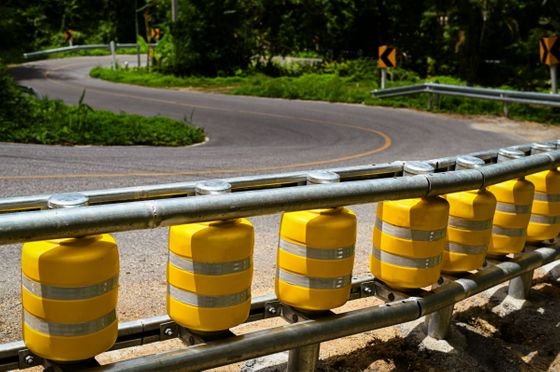
Related Posts:

